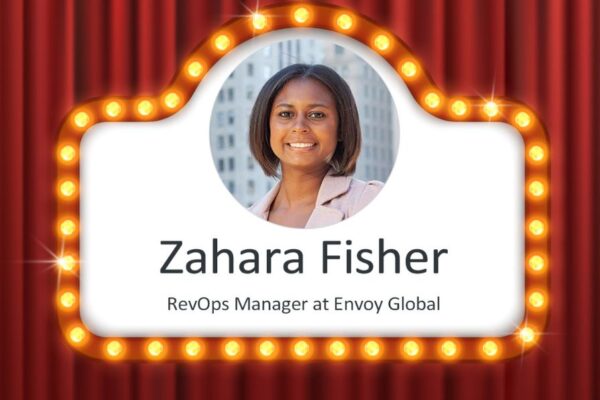
While there are more channels than ever fighting for our daily attention, “cold calling is alive and well,” according to Ronen Pessar, Chief Growth Officer at Stylo.
That’s not to say that cold calls haven’t evolved in recent years. Forget about the traditional, “boiler room” techniques based on calling names one-by-one off a list and reciting a script. That’s gone.
The type of cold calling that’s thriving today is based on a combination of data, research and technology. And the results you get depend on your SDRs’ skill level and how willing they are to master the requisite techniques.
Here are some real-world insights we learned from Ronen on how to help your SDRs improve their cold calling skills.
Practice Makes Perfect
No one was born to be a cold caller. Even today’s cold call ninjas got rejected at the start. The only way to get over your initial fear, shorten the learning curve and improve your skill set is to DO the dialing.
The more calls you make, the better you’ll get. Role playing with your manager or AE is also a great way to practice. You’ll discover and recognize patterns, learn how to respond to them and handle objections.
It’s vital to put in the extra time when you’re starting out. Don’t worry about results – that will come later. After you’ve built some confidence, then you can focus on working smarter and more efficiently.
Build a Confident Mindset
If you suffer from call reluctance or if your heart races every time a prospect picks up the phone, you’re probably struggling with mindset. Overcoming this initial fear is critical for building the confidence you need to succeed at cold calling.
One tip is to smile when you talk, even if the prospect can’t see you. Body language affects your voice and tone and prospects will pick up on your confidence or lack thereof. SDRs that come across as an equal to the prospect, rather than someone that is begging for a favor, are more likely to succeed.

By raising your awareness of tone, you’ll be able to better control how you sound to others.
Be Aware of Tone
Can you communicate without words? Can you say the same sentence five different ways? Gaining control of your tone takes time, but it’s worth its weight in gold. Practice saying the same simple phrase using different tones (e.g., bored, serious, excited, angry). Making the appropriate facial expressions and gestures can help you create the desired tone. You can even record yourself and listen back. By raising your awareness of tone, you’ll be able to better control how you sound to others.
Better Data Means More Calls
B2B cold calling starts with the quality of your data – having the right phone numbers and reaching the right people at the right companies (per your buyer persona or ICP). Without this basic information, even the best cold callers don’t stand a chance.
Another key enabler is your tech stack and dialing tools (e.g., power dialers, parallel dialers) How many dials per hour can you achieve? Since the win rates for new SDRs are going to be considerably lower than more experienced SDRs, they should focus on making as many calls as possible. To reach high call quantities, you need good data and automated dialing tools.
Adopt a “Next Play” Mentality
Attributed to Duke’s legendary basketball coach, Mike Krzyzewski, a “next play” mentality is crucial for handling objections. This approach means moving on from a bad conversation, or even a good one. Don’t dwell on losses and don’t over-celebrate your wins. The most important thing and what you need to focus on is what you’re doing now.
That said, it’s important to acknowledge difficult moments (take a minute to make yourself a coffee), recognize the emotion, and then refocus on the next call – which could turn out to be the highlight of your day!
Be Ready to Go Off-Script
Cold call scripts are great for newbies, but they’re like training wheels on a bicycle. At some point, you need to take them off and just go with the flow of the call. Not relying on the script lets SDRs focus on what’s being said rather than what to say next, so they can really be present and engage with the prospect. Ideally, scripts should be used as a broad outline of points to be covered in the call or as a blueprint for handling specific objections.

“Once you master the right techniques, cold calling becomes fun!”
Motivation Trumps Personality
Personality doesn’t necessarily correlate to SDR success – drive and motivation do (keep this in mind during hiring interviews). You don’t have to be extroverted to be a good cold caller. Introverts often excel by being focused and maintaining a consistent tone (rather than joking and laughing out loud).
The main motivators for the SDR role align neatly with Maslow’s hierarchy of needs. The lowest level is fear – e.g., losing your job, getting yelled at by your boss. While fear is always a good motivator, it generally only works short term.
The middle level relates to goals – i.e., attaining a mastery of the skills needed to excel at your job. Once you master the right techniques, cold calling becomes fun, and you might even find yourself looking forward handling challenging objections.
Self-actualization is at the top of the hierarchy. Can I get good enough at calling to turn it into a passion? You don’t just “find” your passion – you actively create it by putting in the effort. The hard work will enable you to achieve mastery, and mastery will lead to passion.
Environment Matters
COVID taught us that cold calling can be done from anywhere. So – are some environments better than others? The answer depends on the individual.
For some people, there are advantages to working in a bustling, open-space office environment. They draw energy from being “on stage” around others and even relish the competitive atmosphere. Others may find that distracting and prefer to work in a quiet room.
Particularly for new SDRs, being in a setting where everyone hears your call can be intimidating or even embarrassing. They’d be better off working in a room with one or two other SDRs, or from the privacy of their home office.
Managers need to be aware of these needs and allow SDRs to work in the environment where they are most comfortable and effective.
Like music or sports, the more you practice and role play, the better you’ll become and the more you’ll enjoy it. The tactics, techniques and strategies outlined above – combined with the right mindset, tone and data – will get you started towards mastering the art of cold calling.





